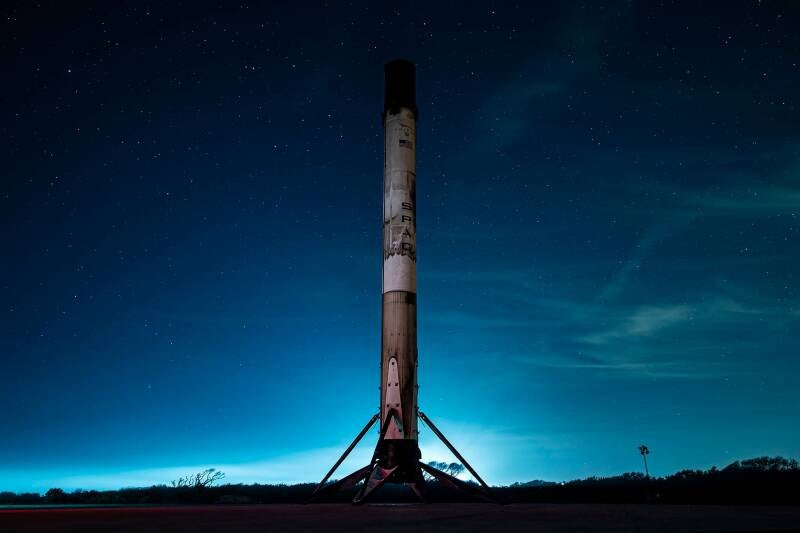
image credit SpaceX
SpaceX has announced that they're working on qualifying their Falcon 9 first stage boosters to support up to 40 missions each. This was after they successfully launched a Falcon first stage for the 20th time but didn't recover it due to additional performance required to deploy European Galileo Navigation satellites under their Rideshare program. This is part of their ongoing efforts to increase the reusability and reliability of their launch vehicles. The data gathered from Falcon vehicle flights is instrumental in furthering the development of the significantly larger and entirely reusable Starship rocket, which aligns with SpaceX’s goal of "making life multi-planetary".
This booster had previously supported a variety of missions, including GPS III-3, Turksat 5A, Transporter-2, Intelsat G-33/G-34, Transporter-6, Intuitive Machines IM-1, and 13 Starlink missions. In total, this Falcon delivered 228+ metric tons to Earth orbit and beyond. The company is leveraging the experience gained from these missions to push the boundaries of rocket reusability even further.
SpaceX CEO Elon Musk has also accepted a challenge to work towards reusing the Falcon 9 rocket’s boosters and fairings for 42 missions each referencing the joke that 42 is the answer to the “ultimate question of life, the universe, and everything,” a joke in Douglas Adams's 1979 novel, The Hitchhiker's Guide to the Galaxy.
SpaceX's reusability program, which is privately funded and developed, aims to create a launch system that could be reused multiple times, much like aircraft. The long-term objectives of this program include returning the first stage of the launch vehicle to the launch site within minutes of launch and returning the second stage to the launch pad after orbital realignment and atmospheric reentry within 24 hours.
The reusable launch system technology was initially developed for the first stage of Falcon 9. The process involves stage separation, where the first stage separates from the second stage after reaching orbit. The booster then flips around, and an optional boostback burn reverses its course. A reentry burn slows down the spacecraft to prevent overheating during atmospheric reentry, followed by a landing burn that achieves a final low-altitude deceleration and touchdown through a precise landing burn.
SpaceX has achieved several significant milestones in its reusability program. In December 2015, the company successfully landed and recovered a first stage. In March 2017, it achieved the first re-flight of a landed first stage. In May 2021, B1051 became the first booster to launch ten missions.
The reusability of launch vehicles offers significant benefits, including reduced cost of space access, increased efficiency, and environmental benefits. Reusability can significantly lower the cost of launching payloads into space, making space travel more accessible and affordable. It also enables faster turnaround times between launches, increasing the efficiency of space missions. Additionally, reusability reduces the need for new rockets, resulting in a more sustainable and environmentally friendly space program.
In conclusion, SpaceX's achievement in reusing the Falcon 9 launch vehicle marks a significant milestone in the development of reusable orbital launch systems. The benefits of reusability are clear, and this technology has the potential to revolutionize space travel, making it more accessible, affordable, and sustainable.
By Azhar


Add comment
Comments